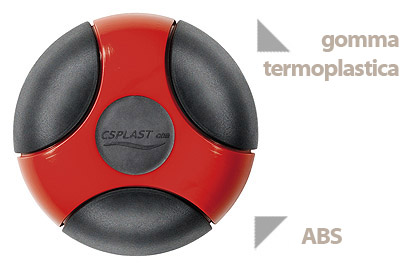Overmoulding makes it possible to mould certain rubber elements or details directly onto the plastic component. These rubber parts adhere perfectly to the part with no need for gluing or the manual insertion of other components.
This technique is used in the case of:
aesthetic needs: for example to create products made up of different colours and materials and soft to the touch;
ergonomic needs: for example to make a non-slip hand grip to facilitate the use of hand-held devices and electronic equipment or to create bumpers or soft edges to protect objects from impact;
sealing and waterproofing needs: for example on parts which need to withstand high pressures or are exposed to the weather;
performance needs: for example to make parts which need to be resistant to critical temperatures or protected against chemical infiltrations.
Overmoulding requires an initial injection of a material into a mould designed to create the component (or a part of it) and a second injection using a different materials (for example thermoplastic rubber) to complete the article.
Here is the latest creation by PlastDesignStudio in which overmoulding was used to make a rubber grip.
Other examples of products made using overmoulding: a drain ring for a shower plug hole and a toy.
- TESTER DIAGNOSTICO IN ABS SOVRASTAMPATO CON GOMMA
- YOYO IN ABS SOVRASTAMPATO IN GOMMA




